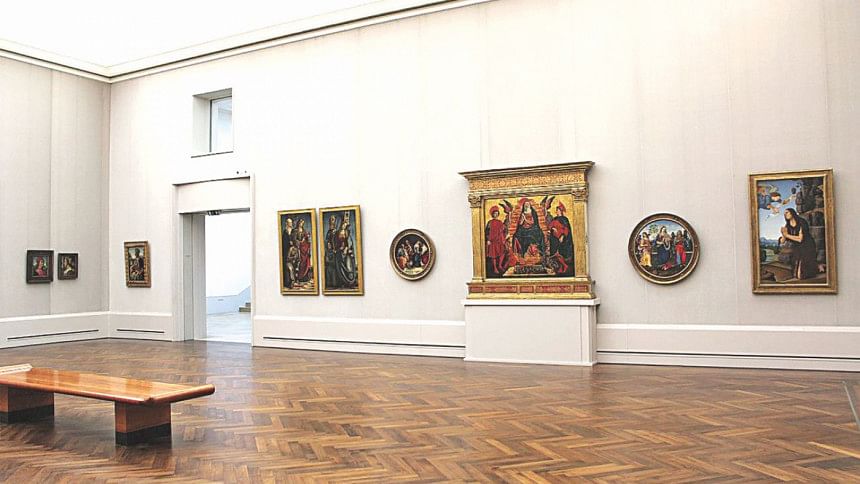THE GEMÄLDEGALERIE

Berlin is the hub of art in Germany. Art or culture enthusiasts visiting Berlin should definitely consider visiting the Gemäldegalerie (Old Master Paintings) of the Staatliche Museen zu Berlin (National Museums in Berlin). The museum owns one of the most spectacular collections of European art, from the beginning of medieval panel painting of the 13th century up to the Neoclassicism of the period around 1800. The collection's history has its roots in 1830, when the gallery was installed in the Royal Museum building (today's Altes Museum) designed by Karl Friedrich Schinkel overlooking Berlin's Lustgarten.
Works of art were chosen from the Royal palaces, and certain private collections were purchased. Wilhelm von Bode, the gallery's most important director during the 19th and early 20th century, steadily expanded the collection with the assistance of the Kaiser Friedrich Museumsverein. Thanks to this tradition of systematic collecting, the Gemäldegalerie is in a position to present the history of European painting in all its schools and epochs.
After being split up for many years, the collection was reunited in 1998 in the gallery building at the Kulturforum. The permanent exhibition shows about 1500 works out of the total of about 3000 in the collection. Particularly worthy of note are the early Italian painting section, with works by Giotto, Fra Angelico, Botticelli and Raphael, and the collection of Early Dutch masters with paintings by Jan van Eyck, Rogier van der Weyden, and Hugo van der Goes. As a counter-piece to this, the collection of German old masters includes works by Albrecht Dürer and Hans Holbein.

The Rembrandt collection in the Gemäldegalerie is among the world's largest and most exquisite. The art of the European Baroque period ranges from Caravaggio and the Roman 17th century via Peter Paul Rubens to Diego Velázquez, whilst their French collection includes wonderful masterpieces by Nicolas Poussin and Antoine Watteau.
The Gemäldegalerie takes pride in collecting and displaying art following scientific methodology. Each room can be taken in as a single statement about one to five artists in a certain period or following a certain style. The German collection is the finest and most comprehensive in the world, rivaled only by Vienna and Munich, and the Early Netherlandish and Italian collections also exceptionally comprehensive. The holdings of Spanish, French and British art are much smaller. Especially notable rooms include the octagonal Rembrandt room and a room containing five different Madonnas by Raphael.
There are two paintings -- The Wine Glass and Woman with a Pearl Necklace -- by Vermeer in the collection.
Other notable experiences include Flemish moralistic paintings which stretch across the north side of the museum, showing an interplay between the religious motives of the artists' patrons and the often sensual inspirations of the artists. In the Renaissance section, for example, Caravaggio's Amor Victorious is displayed alongside Giovanni Baglione's Sacred Love Versus Profane Love. The two paintings are historically connected; after hearing of the scandalous portrayal of the theme “love conquers all” in Caravaggio's work, a Roman bishop commissioned Baglione's reply, which mimics Carvaggio's style, including the features of Amor.
The museum is open from 10 am to 6 pm on Tuesdays, Wednesdays and Fridays; from 11 am to 6 pm on Saturdays and Sundays and from 10 am to 8 pm on Thursdays.

 For all latest news, follow The Daily Star's Google News channel.
For all latest news, follow The Daily Star's Google News channel. 








Comments